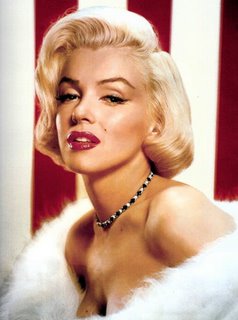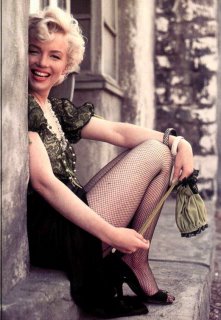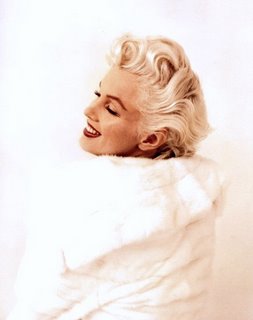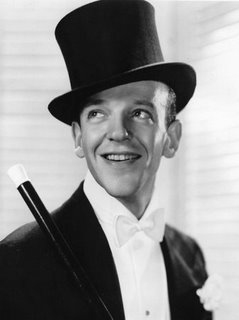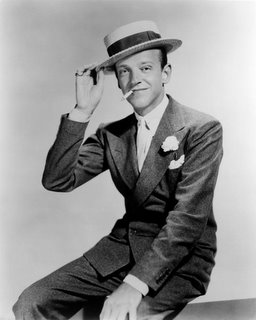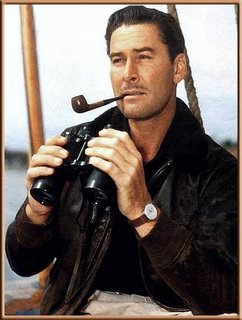 It has been said that there are only two motion pictures in the history of Hollywood – Gone With The Wind and everything else. If that’s true, there have certainly been many valiant attempts to at least rekindle part of the magic first visited upon the world during Christmas 1939 since. Yet, Gone With The Wind remains grand, vibrant and thrilling entertainment regardless of decade it is screened. It operates on the American psyche (and arguably, the world’s) as that most rarified and cherished part of our collective tapestry of life and with a stylistic approach to one of the most turbulent periods in recent history. Eschewing the war – except in limited glimpses that are complimentary to the film’s functioning as ‘the ultimate women’s picture’, Gone With The Wind endures primarily on fondness for a time remembered only through the majesty and opulence of Technicolor rose-tinted glasses.
It has been said that there are only two motion pictures in the history of Hollywood – Gone With The Wind and everything else. If that’s true, there have certainly been many valiant attempts to at least rekindle part of the magic first visited upon the world during Christmas 1939 since. Yet, Gone With The Wind remains grand, vibrant and thrilling entertainment regardless of decade it is screened. It operates on the American psyche (and arguably, the world’s) as that most rarified and cherished part of our collective tapestry of life and with a stylistic approach to one of the most turbulent periods in recent history. Eschewing the war – except in limited glimpses that are complimentary to the film’s functioning as ‘the ultimate women’s picture’, Gone With The Wind endures primarily on fondness for a time remembered only through the majesty and opulence of Technicolor rose-tinted glasses.But there was hell to pay on the road to Tara in the summer of 1938. As the saying goes, producer David O. Selznick had indeed bitten off more than he could chew. Only a year earlier, at the behest of New York literary agent, Katharine ‘Kay’ Brown, Selznick had reluctantly agreed to transform Margaret Mitchell’s lengthy work of fiction, Gone With The Wind into a motion picture. One problem: he had not read the book before hand. The novel’s respectable breeze in sales and sparked publishing phenomenon that followed “frankly, my dear” left the quiet introspective Mitchell agog and besought by reporters. But Selznick had no real interest in the property himself…at least, not yet.
‘PEGGY’ MITCHELL’S LITTLE HOBBY

Born November 8 1900, like her fictional heroin, Margaret Munnerlyn Mitchell was a rebel. Weaned on stories of the old south’s gallantry, she grew up with memories of sitting on bony-kneed confederates who had managed to survive the deluge of the civil war. Her naturalized aversion to formal education was sufficiently quelled by her mother’s inspirational edict; “All that would be left after a world ended would be what you could do with your hands and what you had in your head.”
Although she had been a cub reporter for the Atlanta Journal, a free-spirited flapper and a keen horse woman in her time – Mitchell had retired from the fray of public life after marrying Rhett – a handsome young athlete. Rhett, however, turned out to be an abusive alcoholic and Margaret eventually divorced him to marry his best man – John Marsh – instead. By 1926 Margaret (Peggy to her friends) and John were living in a small dark apartment they had affectionately nicknamed ‘the dump.’ If it were not for a riding accident that left her invalided and bored, there is little to suggest that Mitchell would have undertaken to write Gone With The Wind at all. Laid up, she began the arduous task in long hand to keep her mind active.
Eventually the stacks of paper strewn about the apartment became a topic of interest with visitors to her home. When close friend, Lois Cole suggested that Peggy show her efforts to an agent friend, Harold Latham from Macmillan & Company, Mitchell reluctantly agreed. Astonished when word came back that the book was worthy for publication, Mitchell mused, “my idea was that at least I could brag that I had been refused by the very best publisher.” With Latham’s help, Mitchell began revising and consolidating the text into a manageable manuscript. Latham was not particularly thrilled with the original name for her heroine; Pansy O’Hara – so, after some minor deliberations ‘Scarlett’ was mutually decided upon instead.
Upon publication of the novel Margaret Mitchell became an overnight sensation. Frequently she was asked to divulge if her characters were in fact ‘real’ – an inquiry Mitchell responded to by explaining that ‘only as types’ had she drawn her characterizations from life. Rhett was not the embodiment of any one acquaintance or lover. There was no actual Tara or Twelve Oaks. Assuming that her stay as a best-selling author would be brief – Mitchell continued to reply to each and every request from both the press and her fan base. Then the unthinkable happened – Hollywood came to call.
OVER THE RAINBOW and IN TECHNICOLOR

From the start, David O. Selznick had not wanted to make Gone With The Wind, even after the novel proved a runaway best seller. His apprehensions were justified by a recent slew of films about the south that had failed to find their audience, branding the sub-genre ‘box office poison.’ But feisty Kay Brown, literary property manager to Selznick International, was not about to let that snap assessment stop the studio from making the film.
In a cable to Selznick, Brown wrote; “I beg, urge, coax and plead with you to read it at once…I know that after you do you will drop everything and buy it.”
Still, Selznick remained unconvinced. After Brown proposed to Selznick’s partner and financial backer, Jock Whitney, that their rival company – Pioneer Pictures - buy the property, Selznick purchased the rights to the book for a then unheard of sum of $50,000. So was Brown crazy? “No” Brown assured Selznick, “He was the crazy one.”
Selznick desired to secure Margaret Mitchell’s ongoing participation on the project. But his hopes were quickly dashed. “My connection with the motion picture industry ended when I sold you the rights,” Mitchell wrote in frustration, “From that moment on they it has been yours to do as you please.” Prior to this short reply, Mitchell had done everything in her power to dissuade Selznick from his moderate interest in her ‘little’ story – even going so far as to declare it ‘un-filmable.’
Given Mitchell’s aversion to notoriety, her curt reply to Selznick is understandable. By 1937, the press coverage generated from sales of Gone With The Wind had made Margaret Mitchell a minor celebrity around the world and a virtual prisoner in her own home. Whenever and wherever she ventured beyond her beloved Peach Tree Street, she was besought by requests for interviews – a rage in popularity that the author found quite idiotic, though rarely did she refuse any fan’s polite request for an autograph. In fact, throughout the swirling fanaticism that accompanied ever-escalating sales of the novel, Mitchell continued to pen lengthy and cordial salutations to any and all of her loyalists.
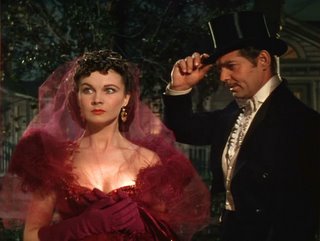
As for Selznick - his headaches had just begun. After launching a country-wide search for Scarlett O’Hara, and finding only inferior debutantes and young mothers turning out in droves for consideration, Selznick turned his attentions to testing already established actresses back in Hollywood. However, if unanimous public opinion precluded anyone but Clark Gable from acting Rhett Butler, it seems that everyone had different ideas about who should play Scarlett O’Hara. Every actress in Hollywood; including Katharine Hepburn, Edith Mariner (nee Susan Hayward), Lana Turner, Zazu Pitts and Bette Davis tested for the role. Scores more allowed vanity and ego to presuppose their rightful casting in the part. Bette Davis, who had previously appeared in Jezebel (1938) an Oscar-winning turn as a spoiled southern belle not unlike Mitchell’s heroin, desperately craved the part of Scarlett. But the answer from Selznick from the start was an emphatic, “No!” When asked why, Selznick angrily replied, “…because I cannot imagine any man chasing after a woman for several hours and ending up with you!”
For a while, Jack Warner got into the act – courting Selznick with an offer to put up half the monies required for the shoot and the loan out of both Davis, and, then resident Warner heartthrob, Errol Flynn. Selznick however, was unimpressed. The public demanded Gable. As a result, MGM (the studio Selznick had left on shaky terms to venture out on his own) needed to be approached.
At one point during preproduction, it seemed as though Paulette Goddard (then lover of Charlie Chaplin and sometimes favorite to both David Selznick and Jock Whitney) would assume the role of Scarlett O’Hara. Ah, but then came Vivien Leigh – like a backward breath of fresh air, so vitally engaging, even if she lacked a southern drawl at first.

Debuted on the set of the burning of Atlanta by David’s brother, agent Myron Selznick (Selznick had opted to shoot the burning long before principle photography commenced to clear the backlot of old sets, and, with stunt men subbing in for the long shots of Rhett and Scarlett), all other’s in the running, including Goddard, seemed to pale to Leigh by comparison.
Not everyone outside of Selznick’s entourage was convinced. Gossip columnist Hedda Hopper was particularly displeased by Leigh’s signing and attempted to craft a counter-campaign against both the actress and the film, marking both as an obvious slight on every girl born in the United States who had not qualified during the cross country search. Known for her slippery way around a good piece of scandal – and for her ability in helping handcraft a few of her own – Hopper was thwarted by public opinion on this occasion. In the North, the signing of Vivien Leigh seemed to generate interest for both the unknown actress and the film while in the south the general consensus was ‘better a Brit than a Yankee!’
If Selznick could breathe a momentary sigh of relief in having found his heroine, the rest of the casting choices were a mess. Gable was under contract to MGM and not wanting to do the role at any price. He had made only one costume picture prior to Gone With The Wind, Parnell (1937), and it had been a qualified disaster in his otherwise sterling tenure as the undisputed ‘king’ of the movies. Eventually, Gable was persuaded into accepting the part – his consolation being a weekend’s furlough to marry sweetheart (and third wife) Carol Lombard.
Selznick also encountered resistance from British matinee idol Leslie Howard, who thought colonial costumes made him look like the doorman at the Beverly Wilshire Hotel. Selznick prodded and pursued Howard, but only after he agreed to give the actor an associate producer’s credit on Intermezzo (1936, sublime love story that introduced American audiences to Ingrid Bergman), did Howard agree to the role of Ashley Wilkes.
As for the part of Melanie Hamilton, Selznick hit yet another snafu with actress Olivia de Havilland. After having snubbed Jack Warner’s generous loan out deal for Davis and Flynn, Warner was playing hardball with de Havilland’s contractual obligations. In the middle of a dispute at Warner Brother, de Havilland sneaked over to Selznick International for a screen and later costume tests. She narrowly escaped Jack Warner’s wrath by appealing to Warner’s wife on a personal level and begging for a brief hiatus from her schedule to play Melanie. The ploy worked, though upon completion of Gone With The Wind, de Havilland suffered in substandard roles at Warner as recompense for her clever insubordination.

By this time, it had begun to dawn on Selznick that what he had become embroiled in was not the creation of one motion picture, but two titanic ventures squeezed into one colossal super production. As Gone With The Wind began to take on a physical presence on the studio’s backlots, Selznick began having second thoughts about the hiring of veteran and personal friend, George Cukor to direct the film. Cukor was known around Hollywood as a woman’s director – a moniker that had placed him in great demand throughout the industry.
Clark Gable, however, was a man’s man and increasingly skeptical over Cukor’s handling of the subject matter. In point of fact, Gable had recognized early on that Gone With The Wind was a melodrama in which the leading lady was neither enamored with or drawn to his character of Rhett Butler from the word go. Fearing that his reputation as a ladies man might suffer from this antiseptic rejection, Gable refused to adopt a southern accent for the part. He would play Rhett Butler as rough and tumble Clark Gable or not at all.

Meanwhile, the black coalition of America had begun to express their concerns over the novel’s depiction of the slave or ‘darkie’ and frequent use of the ‘n’ word and references to the Ku Klux Klan. Throughout preproduction, Selznick made it clear to screen dramatist Sidney Howard that both ‘that word’ and any references to the Klan were to be entirely omitted from his final draft.
In tune with his own despair over the plight of Jews in Europe, Selznick’s sensitivity to the coalition’s concerns, by removing these negative references from his shooting script, have ironically worked against the film during more contemporary times, with the excisions misperceived as Selznick being ‘soft’ on racism. Even so, the black actors (Oscar Polk, Butterfly McQueen, Hattie McDaniel, and others) accepted their roles with considerable trepidation.
By Christmas of 1937, Sidney Howard had drafted a treatment that would have made for a very interesting five and a half hour movie. Bowing to Howard for trims, Selznick quietly hired John Van Druten and Joe Swerling at varying stages in the rewriting process. Neither could maintain Howard’s sense of brilliant story construction. With a starting date fast approaching, Selznick undertook to pen a draft himself – 11 pages longer than Howard’s original. Impatient and running out of time, Selznick implored the reclusive Howard to leave his farm in Connecticut and attend to the final draft in Hollywood. Reluctantly, Howard agreed. However, upon arriving at Selznick International, Howard quickly found himself pulling double duty on both the script and Selznick’s current film in production: The Prisoner of Zenda (1937).

As filming on Gone With The Wind commenced, the atmosphere at the studio quickly degenerated from congenial and adventuresome to odious and temperamental. Heated confrontations between Selznick and George Cukor became an almost daily occurrence. After nearly three months of shooting, Selznick fired Cukor and fell on the mercy of MGM to supply him with a replacement. The studio offered up Victor Fleming – who was then shooting scenes for MGM’s own super production, The Wizard of Oz (1939).
From that moment on, Vivien Leigh, who had adored Cukor’s gentle allowances in the shaping of her performance, came under the constant scrutiny and criticism of the irascible Fleming. Marcella Rabwin, Selznick’s secretary, mirrored Leigh’s dislike of Fleming years later by summing up that he “demanded that she (Leigh) be the bitch (Scarlett) had been described as.” As for Clark Gable – he could not have been more pleased by this sudden turn of events. Fleming was a kindred spirit and the director of two of his biggest successes; Red Dust (1932) and Test Pilot (1938).
The chief problem facing Selznick now was how to bring swift cohesion to a schedule and shoot spiraling out of control; the last straw for a studio that had no cash flow left in its meager coffers. After claiming to have suffered a nervous breakdown, Victor Fleming walked off the set. MGM however, was quick to offer Selznick another replacement with director Sam Wood. MGM also invigorated the cash flow to get Selznick through the rest of Gone With The Wind and his pending project; Alfred Hitchcock’s Rebecca (1940).
But MGM was savvy about their deal. For one and a half million they secured the rights to redistribute Gone With The Wind and reap fifty percent of the profits on all reissues – a lucrative coup made complete acquisition in 1951 when poor management and even worse judgment forced Selznick to sell off his controlling interests in the film to MGM entirely. These were bitter pills for the old mogul/producer to swallow in the autumn of his life.
But in the autumn of 1939, Selznick was far too busy, and chronically bent on Benzedrine to notice his shortsightedness. He was also handcrafting a marketing campaign for Gone With The Wind that would eventually prove to be the blueprint for all subsequent roadshow engagements. Meanwhile, Victor Fleming, aware that Sam Woods’ competence had generated a fresh start on the film, sheepishly returned to the director’s chair with his health and nerves miraculously restored. Selznick splintered the directorial responsibilities into three production units. It is an interesting aside to note that although some of Cukor’s and a lot of Wood’s footage appear in the final cut, only Fleming is accredited with directing the project – and only Fleming took home the Oscar for that honor.

Undoubtedly, Gone With The Wind proved to be much more Scarlett’s picture than Rhett’s, a point of distinction made clear by reviewing the production schedule. Vivien Leigh worked a total of 125 days; Gable, a mere 71; de Havilland – 59 and Howard – 32.
The final day of principle photography was dedicated to the penultimate moment in the film; Rhett abandoning Scarlett in their ornate Atlanta mansion. Sidney Howard’s draft of the scene provided no hint that Scarlett might find some way of getting back the only man who ever truly loved her. After much consternation, Selznick added his own touch to the scene. In the novel, when asked by Scarlett “…if you go, where shall I go? What shall I do?” Mitchell’s original comeback for Rhett was “My dear, I don’t give a damn.” Selznick added the word “frankly” to imbue the line with a final sense of rhythmic indifference. But he still felt that the scene concluded the story on a decidedly depressing note.
If the Hays Office concurred with this assessment of the final scene, it was only because Selznick had left the word ‘damn’ in it. The motion picture production code absolutely forbad the use of slang and/or blasphemy in any film. Determined to have ‘damn’ stay in, Selznick nevertheless filmed a version of the final confrontation with the line revised to “Frankly my dear, I just don’t care” – a moot and bland finale that Selznick absolutely hated and thought a complete bastardization of Mitchell’s work.

If Gone With The Wind’s greatest moment remains in the embodiment of this one line, then Selznick’s finest hour as a producer was in his defense of the original rebuke in front of the Hays tribunal where he emphatically suggested that the word ‘damn’ is neither an oath or a curse, but a defiant conclusion that forever summates the stalemate reached between Rhett and Scarlett. Though perhaps unconvinced, the Hays Office quietly acquiesced to Selznick’s bombastic defense…then fined the producer $5,000 for allowing ‘that word’ to remain in the final cut.






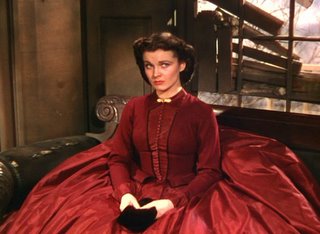

 by Nick Zegarac
by Nick Zegarac